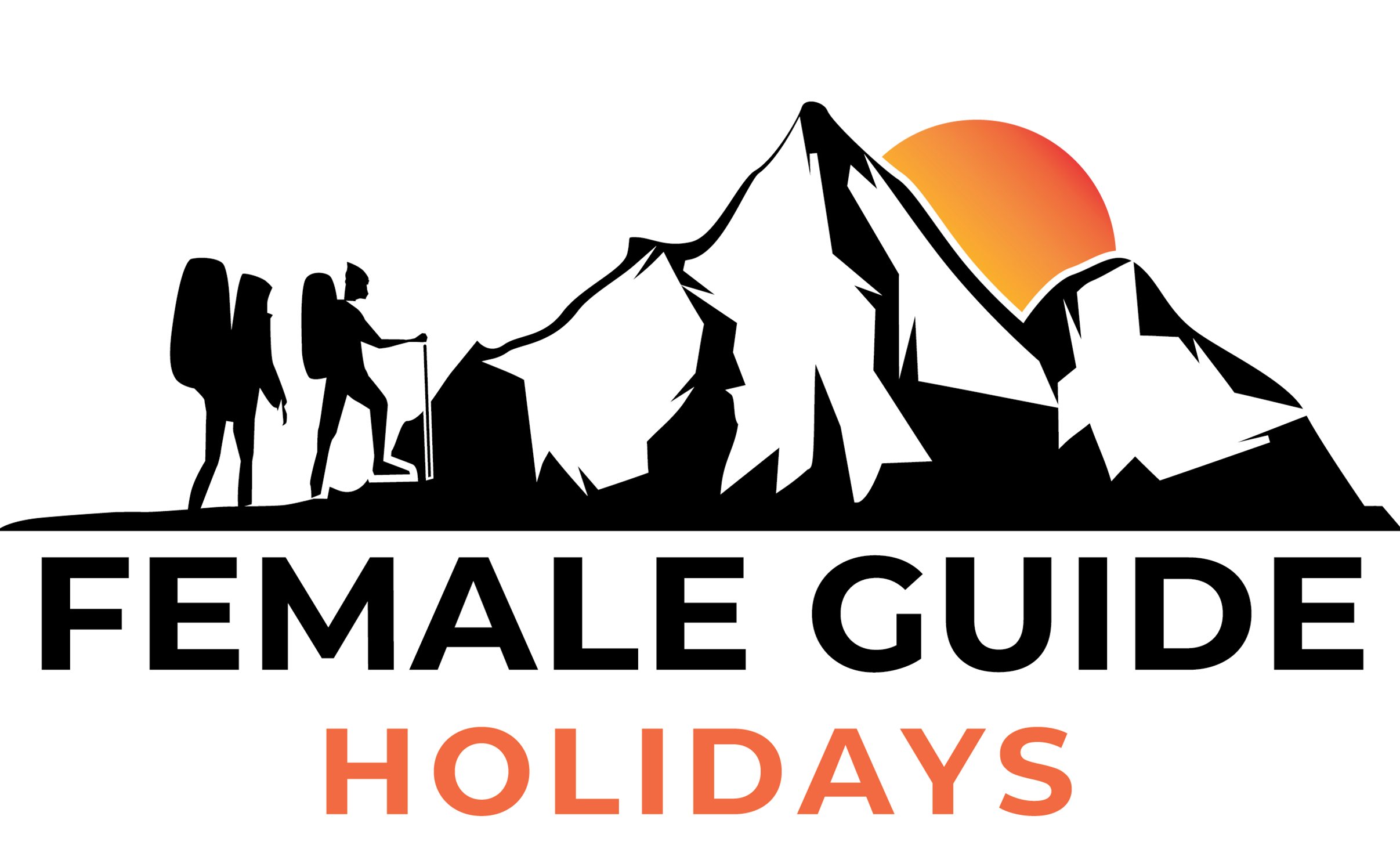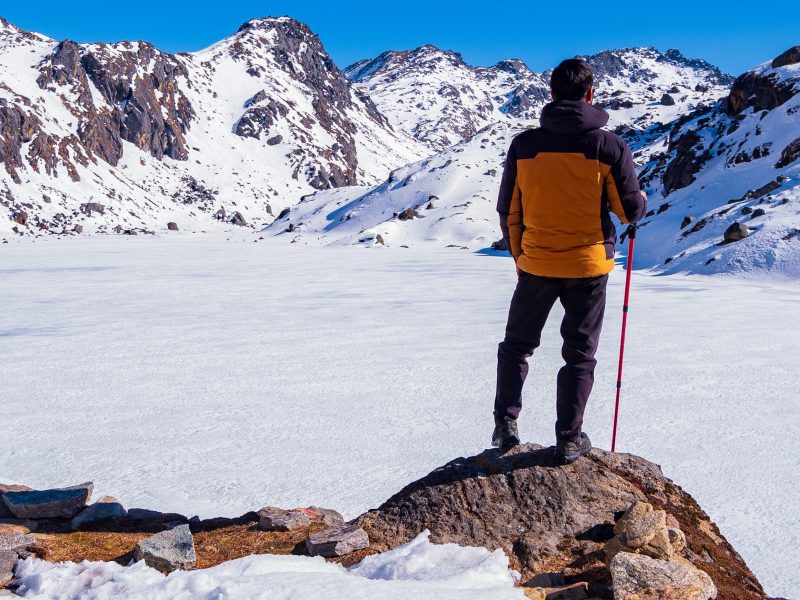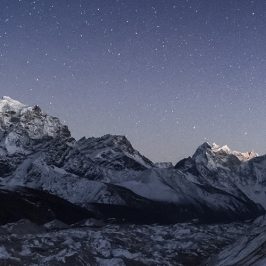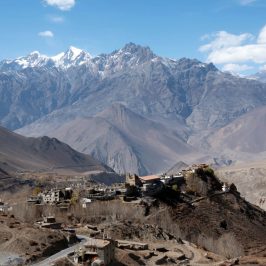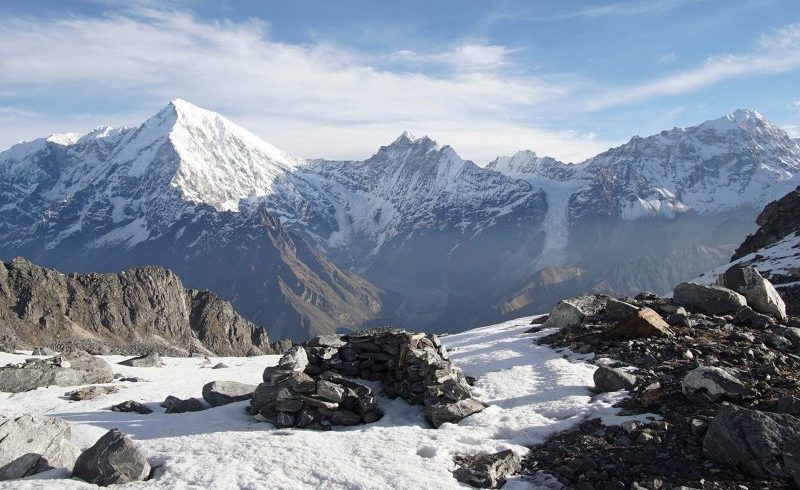The Gosainkunda Helambu Trek is a magnificent trek through the stunning Himalayan landscape of Nepal. This trek takes you through Langtang National Park, showcasing some of the most breathtaking views of the snow-capped Himalayan range.
The trek begins with a drive from Kathmandu to Dhunche, the starting point of the trek. The trail passes through dense forests of oak, rhododendron, and bamboo, offering glimpses of beautiful settlements, waterfalls, and streams along the way. The trek also provides an opportunity to explore the unique culture, lifestyle, and customs of the local people.
Trek Overview
One of the highlights of the trek is the holy lake of Gosainkunda, believed to have been created by Lord Shiva himself. The lake is surrounded by majestic rocky mountains and offers stunning views of the Himalayan range. The Gosainkunda lake is a pilgrimage site for both Hindus and Buddhists and during the full moon festival, thousands of pilgrims flock to the lake for a holy dip.
The trek also takes you through the scenic Helambu region, known for its lush woodlands, terraced fields, and traditional villages. All along the trail, you will have the opportunity to interact with the friendly locals and learn about their unique customs and traditions. Along the way, you will also visit ancient Buddhist monasteries and Chortens, where you can immerse yourself in the spiritual culture of the region.
Overall, the Gosainkunda Helambu Trek is a perfect blend of natural beauty, cultural immersion, and adventure. The trek is suitable for both beginners and experienced trekkers. Be a part of this adventure with Female Guide Kathmandu.

Entry Permits & Requirements:
The Gosaikunda Helambu Trek requires the following permits:
- Langtang National Park Permit.
- TIMS (Tourist Information Management System) card.
The Nepal Tourism Board’s office in Kathmandu can provide you with Shivapuri National Park Permit, Langtang National Park Entry Permit, and a TIMS Card.
Fees for Permits:
- Foreign visitors must pay NRS 3000 per person, whereas nationals of SAARC nations must pay NRS 1,500 and Nepalese must pay NRS 100.
- If you are trekking with a guide, you will need a TIMS Card worth NRS 1000.
- Individual trekker receives NRS 2000 for free (FIT).
- NRS 300 if trekking with a guide and NRS 600 if trekking alone for SAARC countries nationals.
You will not have to worry about waiting for permits since the company, as well as our guides will take care of everything.
You must submit the following documents and data to get these permits:
Copy of your passport
2 Passport-sized photos
Dates when your trek starts and ends
Itinerary/Route
Entry and exit points
Emergency Contact Information (local and home country)
Travel Insurance Details
Meals and Drinking Water:
Popular trekking areas like Annapurna, Everest, Langtang, and Manaslu have a menu system with different ethnic cuisines foods as well as western meals, but some places provide you with typical Nepali meals which are different from international meals, these meals are prepared by the local supplement, every tourist lodge and tea house has a well-trained cook basically attention to clean, hygienic, fresh, and delicious foods, every lodge has safe drinking water or mineral water. If you buy a water purification tablet from Kathmandu you can take water from the tap and purify it by yourself, this will be cheaper and control plastic pollution as well.
Accommodation:
You will find local accommodations in the form of trekking lodges and teahouses, which are situated every hour or so along the trail. These accommodations provide basic facilities such as food, electricity, and clean rooms. The rooms generally have twin sharing beds and a single bed, with good quality mattresses that reduce the weight of your backpack. You can expect a hygienic and comfortable atmosphere at these accommodations. The dining rooms usually have a central heating system that uses firewood to keep you warm and cozy during your stay. This is also a great place to rest and connect with other travelers by sharing your stories. Additionally, campsites are available along the trail for those who want to experience camping in outdoors.
Best Time to Visit Gosainkunda Helambu Trek?
The best time to go on a Gosaikunda Helambu trek is during autumn and spring. The months of September, October, November, March, April, and May are the best time to visit as the weather conditions are better for exploring the high mountain terrain with good visibility.
During autumn, the weather is clear and warm, making it perfect for trekking on high Himalayan terrains. In spring, from March to May, the landscape changes with blooming trees of Rhododendron, mixed with Confers, Oaks, Orchids, and ferns, along with colorful wildflowers, making the region look stunning.
The monsoon season, with harsh weather conditions, is usually avoided by trekkers. The winter season, with heavy snowfall, covers most of the trail, making it challenging to access higher grounds in the region.

Travel Insurance:
Travel insurance is required for all clients engaging in any activity. We strongly urge you to obtain a complete insurance plan from reputable insurance.
Passport and Visa required for Gosainkunda Helambu Trek:
Every client must have a valid passport from the return date with a 6-month prior validity by the Nepalese consulate in your country or the immigration office at Tribhuvan International Airport in Kathmandu.
Equipment list:
- Daypack above 40 liters. (Must be waterproof)
- Down jacket (rental available)
- Warm sleeping bag (rental available)
- Sun head, gulf cap, sunglasses
- Headlamp, torchlight, power bank, and extra batteries
- Ear muffs, sun Lotions/sun cream, wet wipes, and hand sanitizer.
- Pair of liner gloves thin wool and synthetic.
- Cotton t-shirts, Synthetic t-shirts.
- Long-sleeve polyester or synthetic lightweight for sunny days.
- Soft-shell jacket water & wind resist.
- Swimming costume.
- Inner clothes as your requirement.
- Liner socks, woolen socks.
- Proper trekking boots with good ankle support.
- Imodium or Pepto Bismo capsules for upset stomach or diarrhea.
- Diamox for altitude sickness. The guide will help you to take it.
- One small personal-sized first-aid kit with blister treatments such as moleskin, bands,
- anti-infection ointments, muscle relief ointments
Important Note:
Your safety is of paramount importance to us at the Female Guide Holiday. We have the absolute authority to cancel the trip or change the itinerary, when deemed necessary or when we have reason to believe your safety is at stake. Weather conditions, the health condition of a group member, natural disasters, and such, can contribute to changes in the itinerary when traveling in remote mountainous regions. In these extreme situations, we kindly request that you offer your full cooperation to the trusted leader of the group appointed by the Female Guide Holiday. However, we assure you that we will make every effort to keep to the above itinerary.
